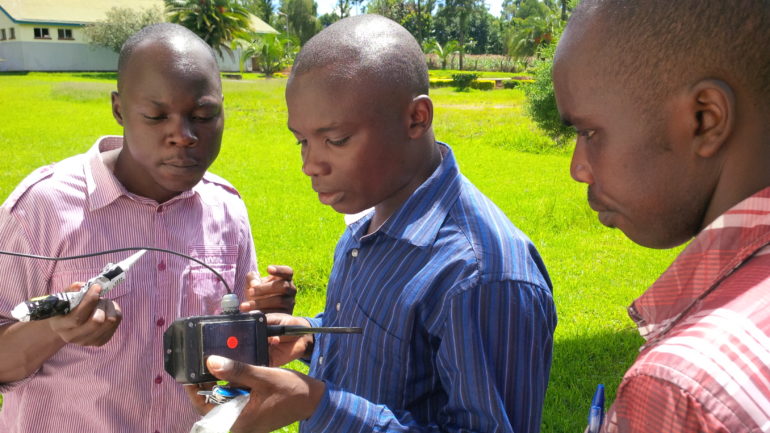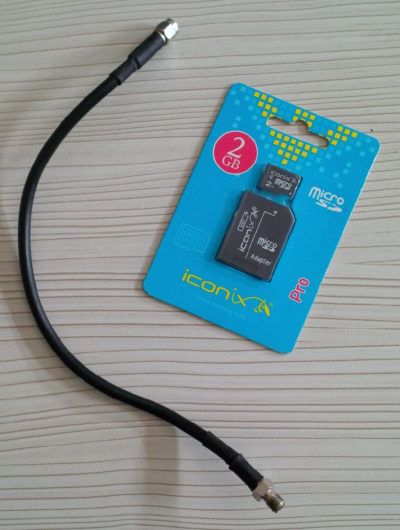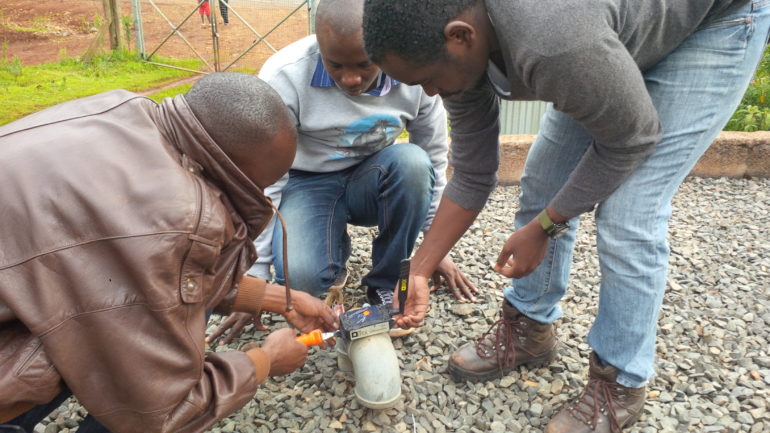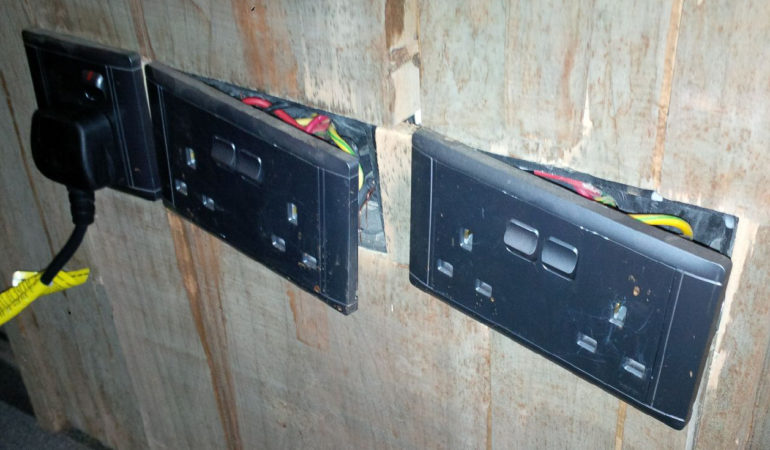Creating World Class Hardware in Kenya
I mentioned BRCK’s “You can do hard things” slogan at the beginning of the Mt Kenya posts. And it has come up a number of times in other BRCK posts as well. I am going to do my best to relate some of the unique difficulties that we faced over the last few months on one of our projects. Our upcoming PicoBRCK is meant to be a generic platform for IOT devices. In our first application we are in the process of installing about 50 of these units across a water distribution network to measure water flow and transmit the data to the cloud. This will help the municipality get a better visibility of where their water is being used or lost. (In some cases up to 70% of the treated water is lost.) This post is a summary of the kinds of challenges we have faced in this project.
1. Typical Hardware Design Issues
Every engineering endeavor has it’s challenges including technical and logistical. For example, the sensor we had to interface to for our water project application of the PicoBRCK was completely new to us and the datasheet was less than clear. So it took a bit of testing to understand how to read the electronic pulses coming from the sensor. This is a normal part of any hardware design process no matter where it is engineered. However these kinds of issues are inevitable and can often cause project timelines to slip in otherwise ideal development environments. The blog at bolt.io (blog.bolt.io) reveals a lot of these nuanced difficulties of doing hardware development in San Francisco.
 PicoBRCK deployment kit.
PicoBRCK deployment kit.
But in addition to these kinds of challenges we have some additional categories that really make life interesting.
2. Classic “Design-in-Emerging-Market” Challenges
As we got ready to push out the PicoBRCK prototypes I realized that I had forgot to order one part for the solar charging circuit. A part that could have arrived at my desk the next day was completely unavailable locally and so we had to get creative to revamp the charging system for the prototypes.
Also because very little is available locally and customs officials are not used to importing circuit boards, specialized batteries or electronic components, various parts of the PicoBRCK arrived after we were already back from Mt Kenya. And everything we have to import incurs a monetary cost and a schedule cost. The cold reality is that the resources we work with simply take twice as long and cost twice as much to get to our office.
These supply chain issues and lack of local resources are the typical challenges that we usually mention when we have to summarize the unique challenges that we face.
 Preparing a PicoBRCK for deployment.
Preparing a PicoBRCK for deployment.
3. Structural Challenges
However, there is a final, less well defined but oh so prevalent category. On a recent trip to install the PicoBRCK prototypes we encountered a number of interesting (read: HIGHLY frustrating) issues which demonstrate these types of challenges beautifully.
First we found that some of our SD cards that we had purchased locally were failing. We realized that the quality control on parts coming here is not quite what it is in other places; it seems that knock-offs and quasi-legit parts abound. (I saw this in Tanzania with fake flash drives that reported as 32GB BUT when you tried to actually copy more than say 4GB everything fell apart.) Emerging markets are a dumping ground for poor quality components.

The RF cable and SD card that gave us so much trouble.
Next we realized that some RF cables that were made for us locally were significantly degrading the cellular performance. It was not a straight work / not work situation and this issue alone took significant effort on the field to troubleshoot. Similarly we needed some parts (labels, gaskets) laser cut and there are actually a number of options around Nairobi. But our BRCK staff ended up teaching one laser shop on how to tune their laser and another place burnt their laser trying to cut our gasket. Even the most basic of elements in a system might be stretching the capability of the local manufacturing chain.
Then, after our initial installation, the units all started discharging indicating that they had been unplugged but the local technicians reported that everything was plugged in and turned on. I drove the 4 hours up the next day only to find that although everything was plugged in it was not actually getting power. The power outlet was of such poor quality the contacts were bent out of position.
 Troubleshooting network connectivity issues.
Troubleshooting network connectivity issues.
Now, three times over the last few weeks we have been flummoxed by the cellular back-haul failing. Sometimes the whole connection goes down, sometimes just the data portion of the connection fails and other times the behavior of the connection is different. Just like pulling my hair out to figure out why my circuit is not working, only to discover a bad connection at the power bar, a flaky cellular carrier is very difficult to identify when we are troubleshooting our own code. (And that is quite an understatement.) The code for making a connection via a modem is well documented and everyone agrees that it just works; but of course “everyone” is operating in another environment. As a result we have had to create some incredibly robust GPRS code that catches all these corner cases and accommodates them. (Huge kudo’s to Reg on this front!) The most basic infrastructure (in this case cellular and electrical outlets) inhibit the development of more sophisticated infrastructure.
 Typical power outlets.
Typical power outlets.
Why we push on
In the early days of BRCK we prided ourselves (and we still do!) at making do with whatever resources we have available. There are definitely situations where this is an incredibly valuable skill. But to develop world class solutions one needs the proper tools. A good friend of mine is luthier and insists on have exactly the right tool for every job he undertakes. Otherwise he will not be able to live up to his customers expectations.
Some reading this post may, at this point, be feeling sorry for us or assuming that BRCK has no future under such adversity. However, there is a larger factor at work which propels us, and numerous other startups, to success. Our customers are demanding world class solutions. They know what is possible, they see the opportunity in their market and they know that BRCK has the expertise to overcome the unique challenges that crop up in emerging markets. So while the challenges are significant they are simply an indicator about how burgeoning the market is.
Kurt this is a very inspiring article. Pushing on against those kind of tremendous odds is greatness. Engineering projects are actually quite intensive. Research even in developed worlds I would imagine is a daunting task and it takes resilience to overcome the huddles in problem solving especially in circuit design. Throw in local variables such as poor networks and also quasi-legitimate products and serious challenges lay ahead. I’m quite jazzed that you guys are determined to make do with the situation as is, and press on with consumer product design in Kenya. It is interesting that you should actually point out that problem. It is a huge issue, having illegitimate products allowable into the country(material for another article perhaps).